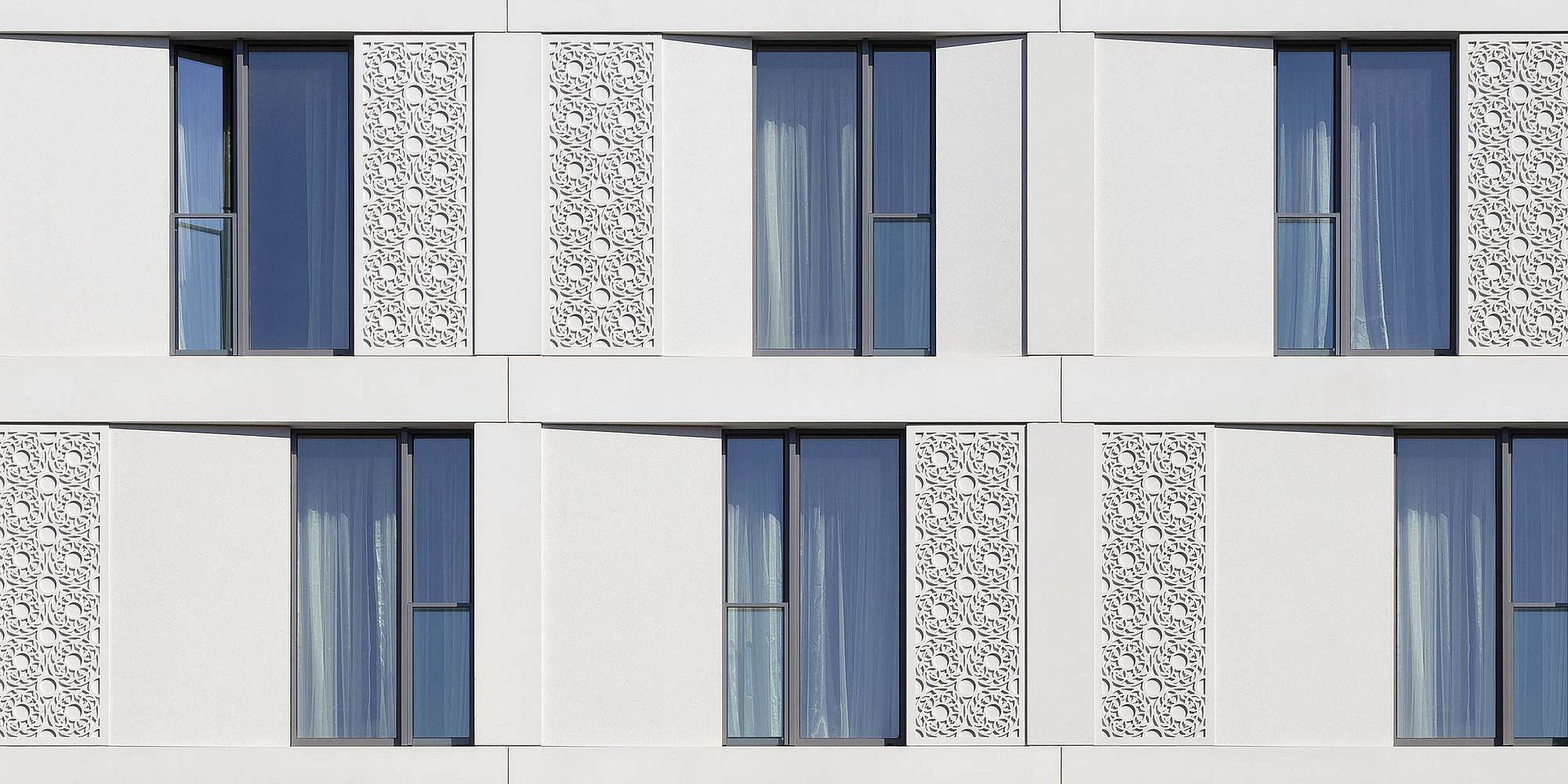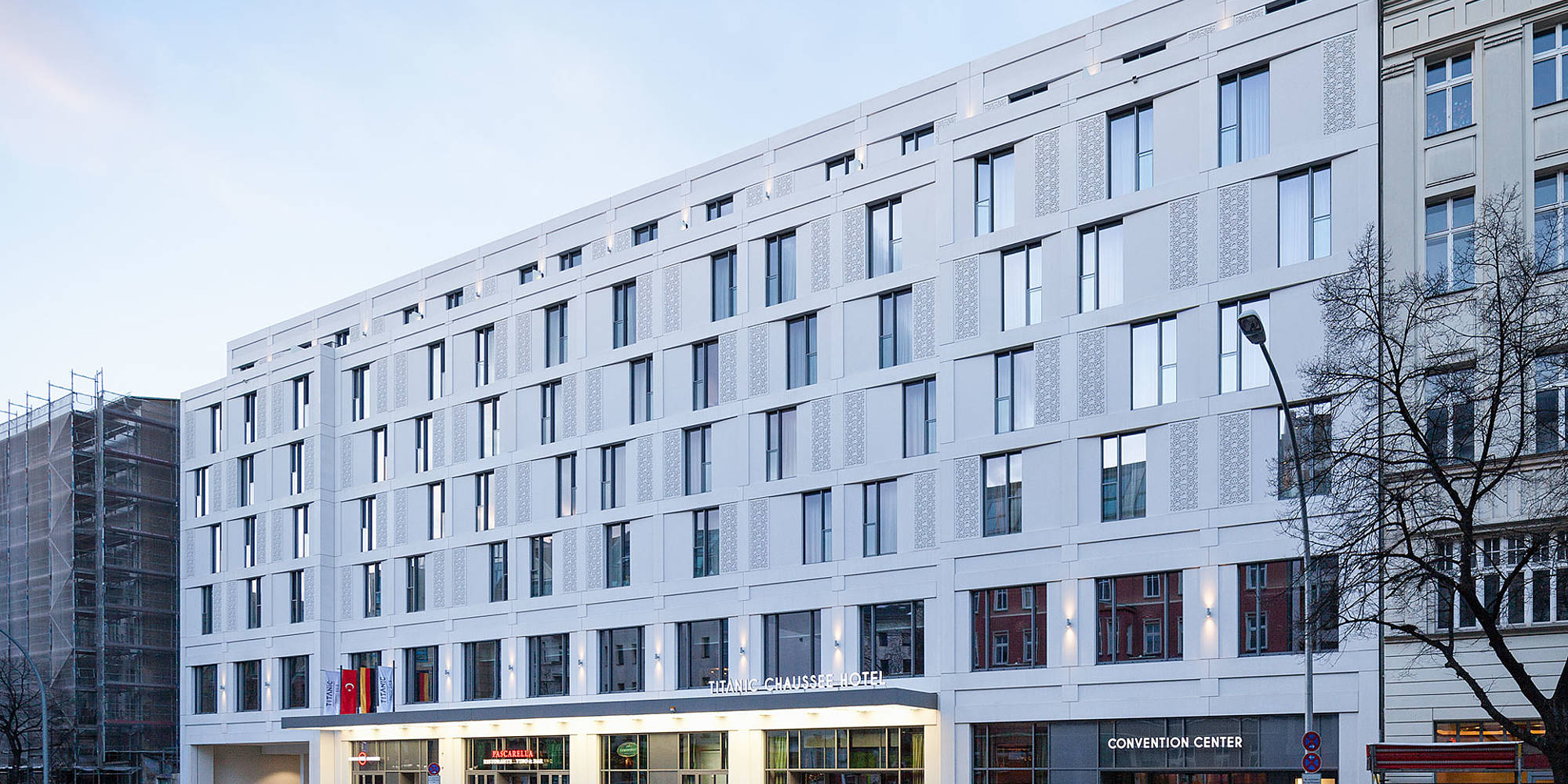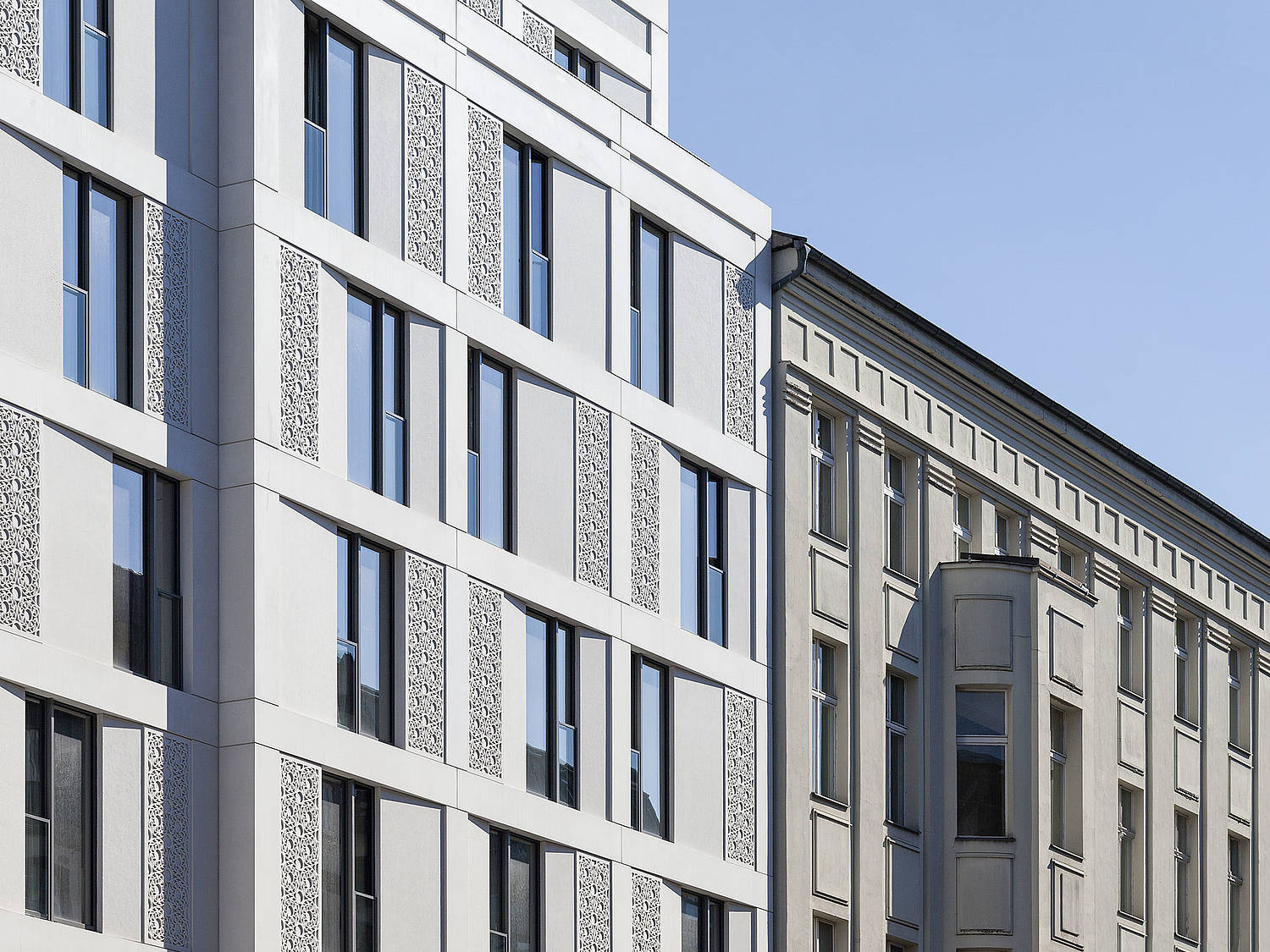Titanic Hotel, Berlin, Germany
A concrete structure with an oriental design makes for a special eye-catcher at Berlin's Titanic Hotel.
The Hotel Titanic has been welcoming overnight guests at Chausseestraße in Berlin-Mitte since 2015. 389 rooms span seven floors, and the two basements house a wellness area with a Turkish steam bath. In the nearly three years since its opening, this establishment has earned itself a place among Berlin's premium hotels.
Architectural firm Tschoban Voss planned the construction of the hotel for the Moonday project company in a large building gap on Chausseestraße. To accommodate the large number of rooms, the architects created the structure with several wings that extend deep into the building plot.
Guests enter the hotel from the side of the road and go through the lobby to reach a glass-covered atrium from which the restaurant and event areas are accessible. A flexibly dividable ballroom on the first floor offers room for up to 1400 people. The breakfast room and business center are located on the second floor, which connects to the hotel rooms.
Not only can the hotel impress with its inner qualities but its exterior is also more than respectable: The new construction's façade is pearly white and predominantly features a rigid pattern and plastic elements. "It is structured by elegantly proportioned window openings, flat chamfered reveals and decorative elements, thereby making the individual floors discernable", said the architects. The façade elements have many different surface structures but are visually bound by the concordant, colorful design.


Tschoban and Voss have opted for an oriental pattern from a catalog of more than 200 RECKLI concrete structures, which give the façade a charming and elegant character. The circular pattern with floral elements draws looks from pedestrians and visitors and merges into many different patterns if observed for a long time.
To achieve this effect, the pre-cast concrete elements were cast with elastic RECKLI formliners: The formliner is adhered to the casing and coated with a release wax so that it can be subsequently separated from the concrete without any issues. Then the concrete is poured into the mold and demolded after hardening. Due to its elasticity, the formliner can be effortlessly removed and re-used – up to 100 times depending on the copy. The finished, molded concrete elements are installed just like conventional façade components.
